Which pipes are best used for outdoor sewers: a comparative overview of options
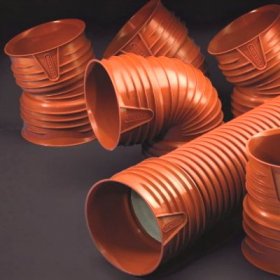
The drainage system is not limited to internal communications. And if for the owner of an apartment in a multi-storey building, only internal pipelines are a matter of concern, then the owner of an individual housing has to take care of external communications. Their reliability and durability directly depend on which sewer pipes are selected for external sewage. There may be several options. Let's consider each of them in more detail.
Content
What should be the pipes for the external system?
External pipelines have to work in difficult conditions, which is why they are subject to increased requirements. The material from which they are made must be:
- durable;
- resistant to a variety of aggressive environments;
- able to tolerate seasonal temperature changes without damage to their properties;
- wear resistant.
These requirements are met by various types of plastic, steel, cast iron, asbestos cement and ceramics. Of these materials, pipes for external systems are most often made. Choosing such details, it should be remembered that they should:
- withstand the severity of the backfill and the load from the possible movement of people and vehicles over them;
- resist static and dynamic effects;
- Resist the effects of groundwater, causing displacement inside the docking nodes and, as a result, depressurization of the system.
When choosing pipes, it should also be remembered that the reliability of the system is affected not only by the quality of the material of the parts, but also by the literacy of their installation. If it is too complicated or fraught with certain difficulties, it may be worth considering a different type of pipe.
What can you choose from?
Pipes suitable for the arrangement of external sewer pipelines are many. If desired, it can even be made of glass parts. However, it is rather exotic. Consider the most popular options among developers.
Option # 1 - asbestos cement parts
For the manufacture of products, a mixture of asbestos fiber with Portland cement is used. The advantages of such pipes are:
- Durability. The asbestos cement system can last from 50 to 100 years.
- Resistance to aggressive environments. Almost any liquid can be drained through such pipes.
- Light weight, which greatly facilitates their installation.
- Resistance of a pipe to "overgrowing" of an internal gleam.
- Easy installation. You can trim and dock elements without using a special tool.
The disadvantages include the fragility of the material, which is very unstable to mechanical damage. When buying such products, you should very carefully inspect the ends of the pipes. It is there that most often chips and cracks appear. In addition, they must also be transported very carefully.
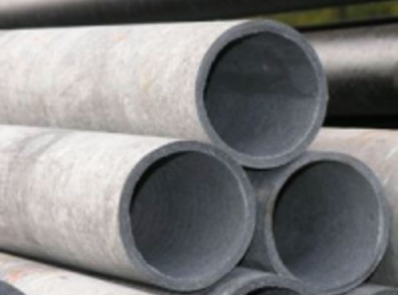
Asbestos-cement pipes are very fragile. Before installation, they must be carefully inspected. Most often, cracks and chips form at the end face of the parts.
Option # 2 - ceramic products
Ceramics as a material for the production of pipes for sewage was used in antiquity. And until now, such products are quite popular. The reason lies in the large number of advantages of ceramic parts:
- Chemical inertness, which makes it possible to transport almost any liquid through such pipes.
- Small roughness of the inner surface, which prevents the appearance of growths and clogging of parts.
- Resistance to temperature of the transported liquid and the environment.
- Simple installation.
The disadvantage of ceramics is its fragility, which is why special care must be taken when transporting and installing it. In addition, the length of such products is small, which significantly increases the number of joints in the system. On sale you can find ceramic pipes with a diameter of 100 to 600 mm in two connection options: with a thread and a bell.
Before installing ceramic pipes, be sure to check their quality. For this, every detail is inspected and tapped. A rattling sound is considered evidence of cracks.
Option # 3 - cast iron sewer pipes
Socketed cast-iron pipes - a traditional solution for arranging sewers. For private construction, a part with a diameter of 160 mm is most often used. Cast iron pipes have many advantages:
- High strength, allowing products to withstand significant loads.
- Durability. Cast iron pipelines can be used for decades.
- High corrosion resistance and insensitivity to most aggressive environments.
- Resistance to temperature differences.
- A fairly simple installation carried out by the bell method.
A serious "minus" of such material is its high weight. In this regard, the installation of a cast-iron pipeline without special equipment is impossible. The inner surfaces of cast iron products are characterized by roughness, deposits are easily formed on it, which over time leads to the formation of blockages and "overgrowing" of the pipe. In addition, the material has restrictions on use. It is very sensitive to saline solutions, so cast iron should not be used in saline soil.
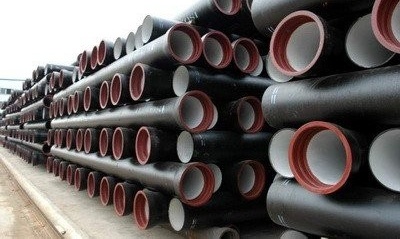
Cast iron is a traditional material for sewer pipes. Its main disadvantage is the high weight, which requires the use of special equipment during the installation of the system.
Option # 4 - PVC pipe
PVC is an affordable, and therefore very common polymer. Pipes made of it for the external sewage system are distinguished by numerous "pluses":
- Smooth walls that prevent the formation of internal growths.
- Fairly high strength.
- Frost resistance. Pipes do not crack even in the event of complete freezing.
- Light weight, which allows installation without the involvement of special equipment.
- Easy installation.
- Resistance to corrosion and some aggressive environments.
- Low cost.
- High wear resistance. Pipes do not lose their properties even when transporting liquids with a large amount of sand.
The main disadvantage limiting the use of PVC products is the significant temperature elongation of the material. Therefore, such pipes are not installed in areas where transportation of liquid is required, the temperature of which exceeds 60C.
The characteristics of such products may vary significantly depending on the version. Today, PVC pipes of two types are produced: one and three-layer.In the latter embodiment, the inner layers are made of recycled foam plastic, and the outer ones are made of unplasticized material. Details differ in the class of rigidity. Issued:
- Rigid pipes, class S. Designed for laying to a depth of 8 m, they have a maximum wall thickness.
- Medium-hard products, class N. They can be laid to a depth of 2 to 6 m.
- Light elements, class L. They are used for arranging pipelines laid to a depth of 0.8 to 2 m.
As a rule, when installing PVC pipes, a socket connection is used. This is an extremely simple operation that does not require special equipment and skills. In some cases, the glue method or the so-called cold welding is used.
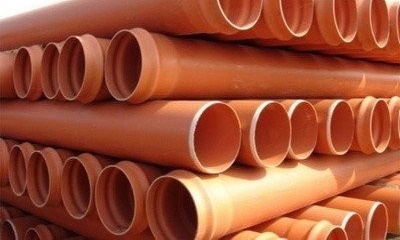
PVC pipes have a usage limit. They can not be laid in systems where the temperature of the transported liquid exceeds 60C
Option # 5 - polypropylene products
Polypropylene pipes are optimally suited for the installation of external sewer pipelines in residential buildings and pressureless storm sewer systems. Among their many advantages include:
- Resistance to temperature influence. The upper limit of permissible temperatures is located at 95C. The material tolerates cold as well as heat and does not lose its qualities.
- Chemical inertness. Polypropylene is not subject to corrosion and does not emit toxic substances.
- A smooth surface inside the parts on which sediment particles do not settle. Clogs in such sewers occur only if the system is incorrectly installed.
- Long term of operation. The manufacturer guarantees that polypropylene pipes will last at least 50 years with proper use.
- Light weight, which gives advantages during installation and transportation.
- Easy installation. Light weight, elasticity and special connecting sockets allow installation to be carried out very quickly and without the use of special equipment.
The assortment of polypropylene pipes is very wide, which allows you to find parts for a system of any complexity and configuration.
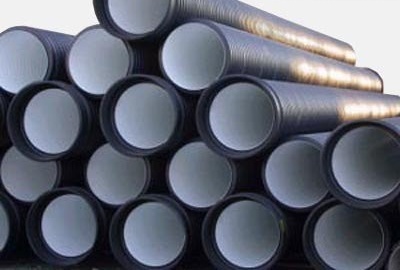
Polyethylene sewer pipes are sensitive to ultraviolet. They must be laid so that the surface of the pipeline is protected from direct sunlight.
Option # 6 - polyethylene pipes
Another variety of plastic products that are widely used to equip external sewer systems. The advantages of such pipes are:
- Durability. The service life of such products is tens of years.
- Resistance to temperature differences. The working range of the material is in the range from -20 ° C to + 60 ° C. For a short time, polyethylene can withstand the effects of a liquid heated to 100C.
- Simple installation without special tools and equipment.
- A smooth inner surface that prevents sedimentation of sediments that block the pipe lumen.
A disadvantage of polyethylene is its sensitivity to UV radiation. Such pipes may only be used provided that sunlight does not fall on them.
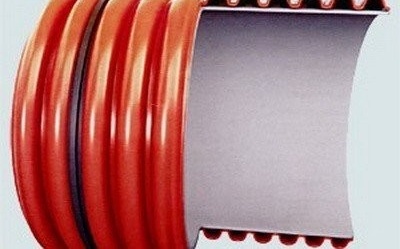
Corrugated sewer pipes are available in two layers. The outer corrugated layer gives the product rigidity. Internal smooth - allows to transport drains without interference
With all its advantages, plastic pipes are not strong enough. To level this disadvantage they are made corrugated. Such products are made from low pressure polyethylene or polyvinyl chloride. They have two layers. External - corrugated, providing details with increased rigidity. The inner layer is smooth, making it possible to freely transport drains. Corrugated pipes are connected to the socket using special rubber cuffs or by “cold welding”.
Video review of "sewer pipe"
The assortment of pipes that can be used to equip the external sewage system is much wider. Above were considered only the most commonly used options. It is impossible to assert unequivocally that one of them is superior to all the others. Each type of product must be considered with respect to the specific conditions in which the pipeline will be operated. And only taking into account the individual characteristics of the site and the capabilities of its owner, you can make an informed decision that will allow you to easily use the external sewer system.
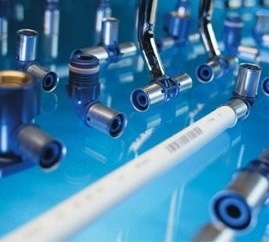
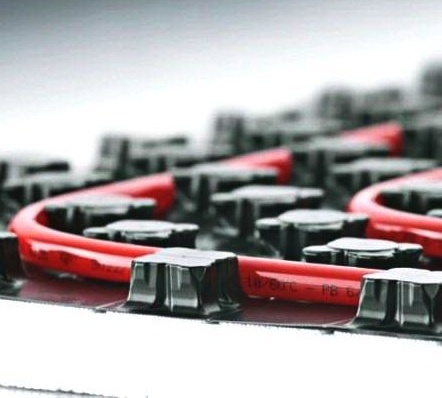
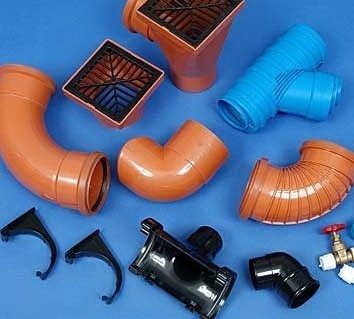
2 comments